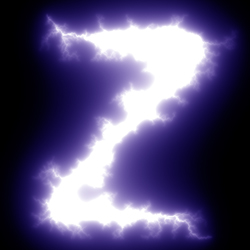|
Fast Animation of Lightning Using
an Adaptive Mesh
Theodore Kim and Ming Lin
kim@cs.unc.edu, lin@cs.unc.edu
|




|
| |
Abstract:
We present a fast method for simulating, animating, and rendering lightning using adaptive grids.
The "dielectric breakdown model" is an elegant algorithm for electrical pattern formation that we
extend to enable animation of lightning. The simulation can be slow, particularly in 3D, because
it involves solving a large Poisson problem. Losasso et al. recently proposed an octree data structure
for simulating water and smoke, and we show that this discretization can be applied to the problem
of lightning simulation as well. However, implementing the incomplete Cholesky conjugate
gradient (ICCG) solver for this problem can be daunting, so we provide an extensive discussion of
implementation issues. ICCG solvers can usually be accelerated using "Eisenstat's trick," but
the trick cannot be directly applied to the adaptive case. Fortunately, we show that an "almost
incomplete Cholesky" factorization can be computed so that Eisenstat's trick can still be used.
We then present a fast rendering method based on convolution that is competitive with Monte Carlo
ray tracing but orders of magnitude faster, and we also show how to further improve the visual results using jittering.
|
|
|
|
|